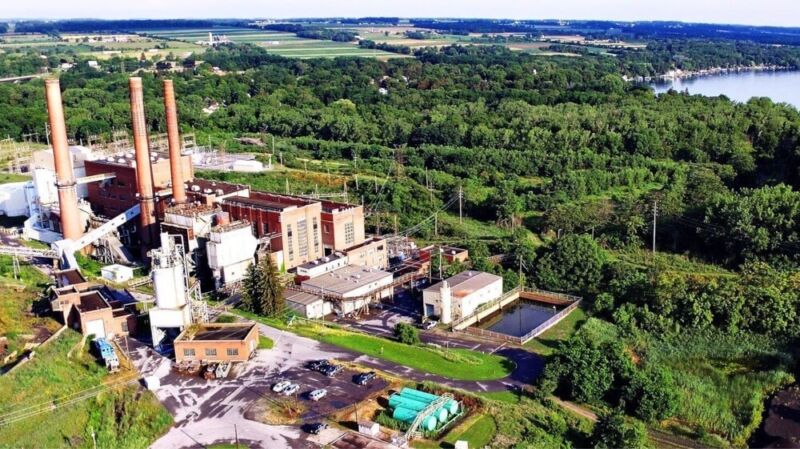
A company called Atlas has acquired the deprecated Greenwich Power Plant in upstate New York and is working to generate electricity to mine the cryptocurrency Bitcoin. However, neighbors are complaining that the heat from the power plant has turned the water in a nearby lake hot.
Cryptocurrency can be obtained by mining, so more and more places are acquiring Bitcoin through large-scale mining. According to data published by the Cambridge research team on Bitcoin mining electricity consumption, Bitcoin mining consumes more electricity than national electricity consumption in countries like the Netherlands and the United Arab Emirates. Bitcoin mining consumes huge amounts of electricity, resulting in a massive carbon footprint. This is why Microsoft co-founder Bill Gates said it would have a negative impact on the global climate.
Atlas is mining bitcoin for a marketing experiment, and tens of millions of liters of hot water generated for power generation are pouring into Lake Seneca. Residents near the Greenwich power plant also said the lake was warm and felt like a bath.
At the Greenwich Power Plant, which produces electricity by burning natural gas, 60% of the electricity generated is supplied to nearby households, and the remaining 40% is used for Bitcoin mining. Atlas, which acquired the power plant, succeeded in mining 1,100 BTC as of February 2021, and it is said that thousands of books and equipment were used for mining. Atlas will install thousands of more mining rigs to increase the scale of mining.
The Greenwich Power Plant, which powers the Atlas mining facility, is pouring more hot water into Lake Seneca. In December 2020, the Atlas Bitcoin mining business emitted 24103 tonnes of carbon dioxide. This is ten times more than in January 2020, when Atlas started its Bitcoin mining business. That’s why the Greenwich power plant emits 641,000 tons of carbon dioxide every year.
The Greenwich power plant had a power generation capacity of up to 108 MW, but is currently using 85 MW. Therefore, if the Greenwich power plant uses its production capacity to its full potential, its annual greenhouse gas emissions could reach 106 tonnes.
The Greenwich power plant produces 510 million liters of warm water at 42 degrees in summer and 30 degrees in winter. The New York Environmental Protection Agency reports that the average temperature of hot water discarded from Greenwich over the past four years has been 38 degrees Celsius in summer and 21 degrees Celsius in winter. Residents around Lake Seneca have said the water temperature has risen, but the Seneca Lake environmental survey won’t be completed until 2023.
The Greenwich power plant shared details of its water temperature measurements from March 1 to April 17, 2021, with an average wastewater temperature of 9.8 degrees Celsius, and only the Greenwich plant would reduce greenhouse gas emissions that would adversely affect Lake Seneca or be important to New York. The opinion that it was undermining the target was false, and pointed out that the average temperature of water discharged from the plant nine miles to the north was 19.7 degrees Celsius. Related information can be found here.

